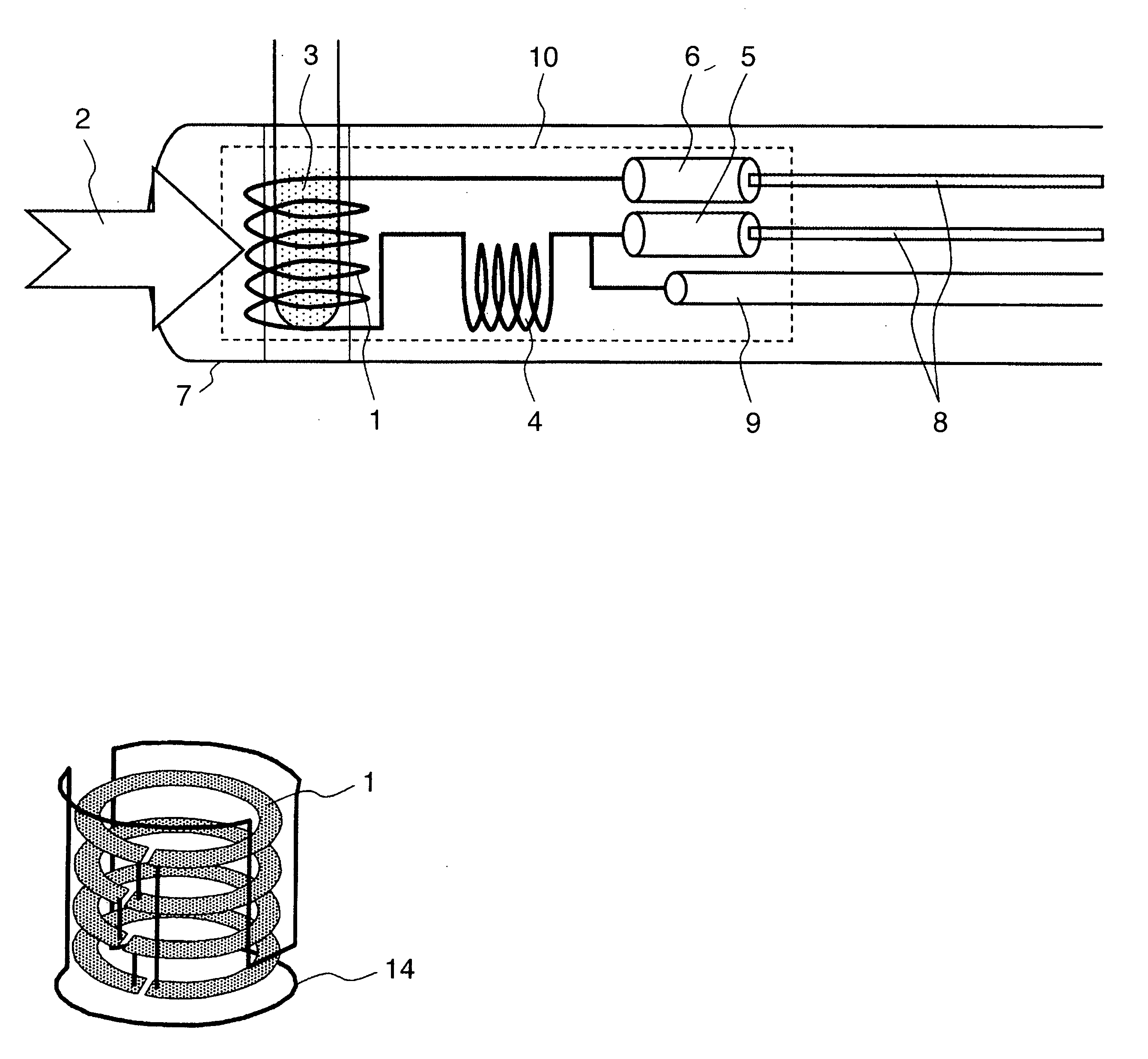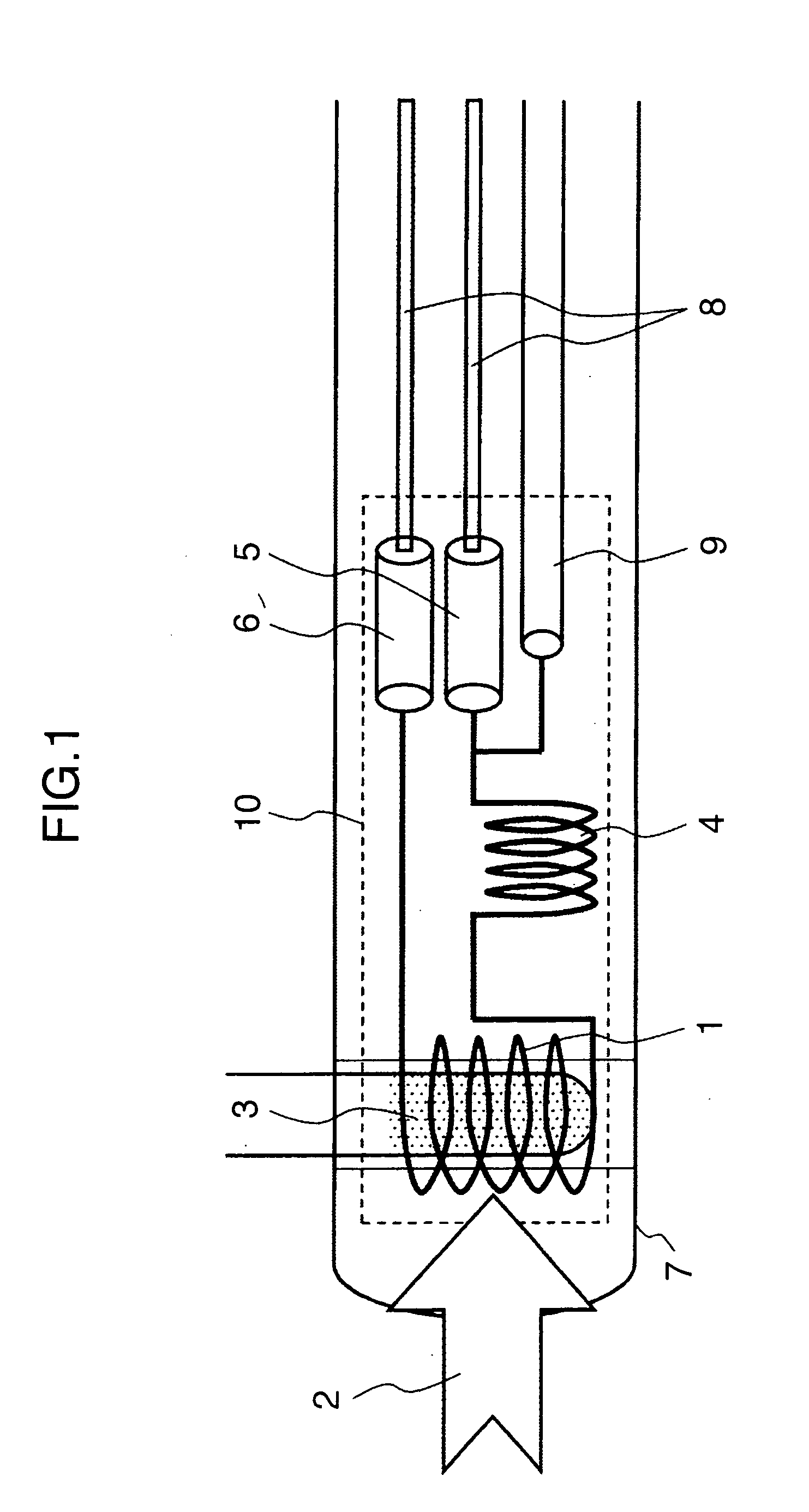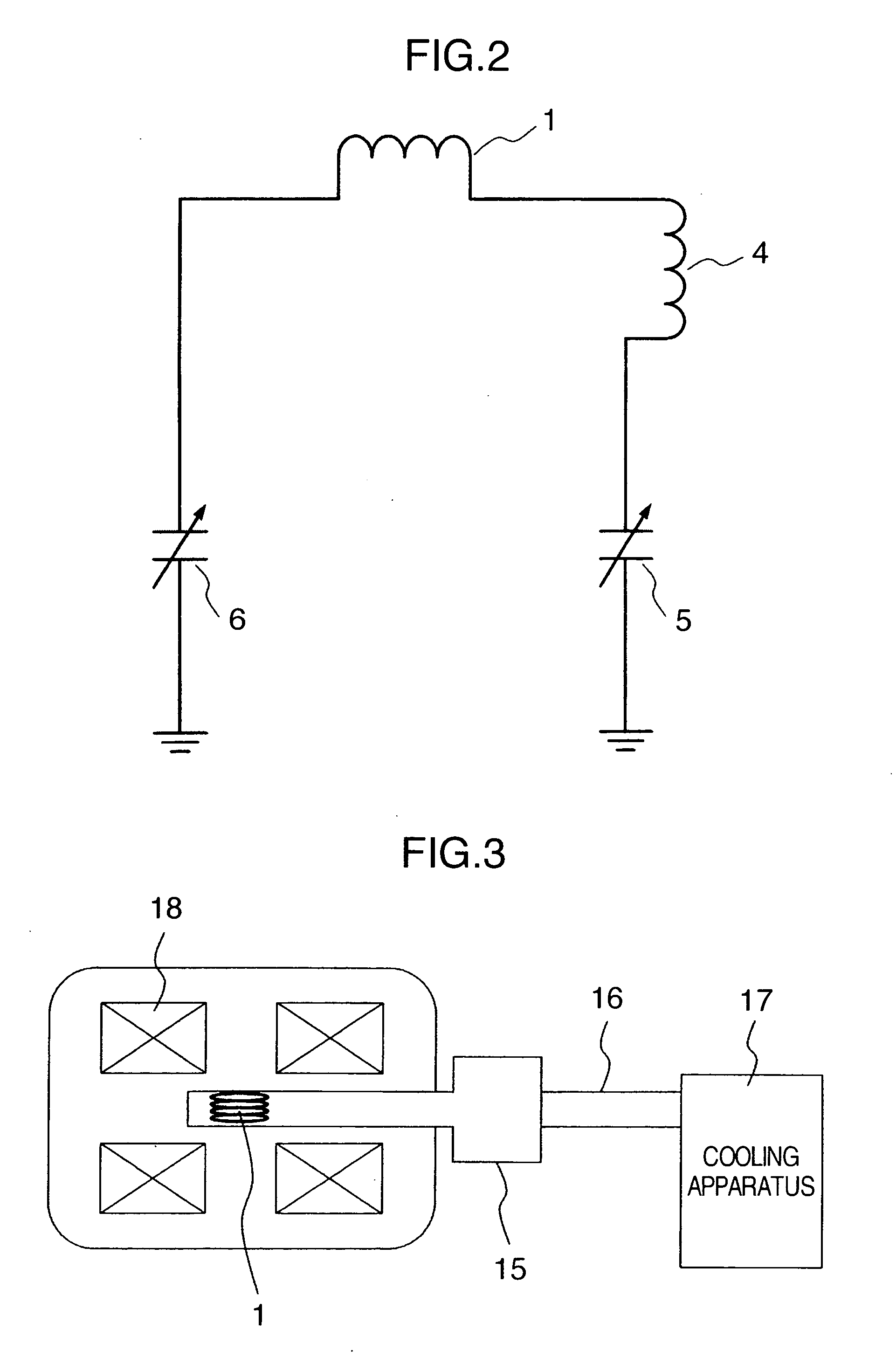NMR probe for NMR apparatus
- Summary
- Abstract
- Description
- Claims
- Application Information
AI Technical Summary
Benefits of technology
Problems solved by technology
Method used
Image
Examples
embodiment 1
[0026]FIG. 1 illustrates an embodiment of the transmission / reception-separation-type probe circuit according to the present invention. The low-temperature probe in the present embodiment is as follows: A sample 3, i.e., the measurement target, is set up inside the detection coil 1. A uniform static magnetic field 2 is generated in proximity to the detection coil 1 in the direction of the arrow. The direction of the magnetic field to be detected by the detection coil 1 is perpendicular to the direction 2 of the uniform static magnetic field.
[0027] In the low-temperature probe, in order to reduce the thermal noise down to a lowest possible limit, an inclusion 10 is cooled down to 20 K or lower. The basic structure of the low-temperature probe includes an outer container 7 for maintaining inside of the probe under vacuum for implementing the heat insulation, and a heat-insulation support structure for supporting the cooled-down inclusion 10.
[0028] The inclusion 10, which is an area c...
embodiment 2
[0040]FIG. 5 illustrates an equivalent circuit to the probe circuit according to a second embodiment of the present invention. In the equivalent circuit illustrated in FIG. 5, another different detection circuit which resonates with a second frequency is connected to the detection circuit of the detection coil (detection coil) 1 illustrated in FIG. 2. The first frequency is the frequency of the nuclear species detected with the high sensitivity in the NMR measurement.
[0041] In FIG. 5, band pass filters (i.e., series resonance filters associated with the second frequency) 13 for implementing isolation between the first frequency and the second frequency are connected to both ends of the detection circuit which is illustrated in the equivalent circuit in FIG. 2 and which resonates with the first frequency. Moreover, a tuning-dedicated variable capacitor 11 associated with the second frequency and a matching-dedicated variable capacitor 12 associated with the second frequency are adde...
PUM
 Login to View More
Login to View More Abstract
Description
Claims
Application Information
 Login to View More
Login to View More - R&D
- Intellectual Property
- Life Sciences
- Materials
- Tech Scout
- Unparalleled Data Quality
- Higher Quality Content
- 60% Fewer Hallucinations
Browse by: Latest US Patents, China's latest patents, Technical Efficacy Thesaurus, Application Domain, Technology Topic, Popular Technical Reports.
© 2025 PatSnap. All rights reserved.Legal|Privacy policy|Modern Slavery Act Transparency Statement|Sitemap|About US| Contact US: help@patsnap.com



